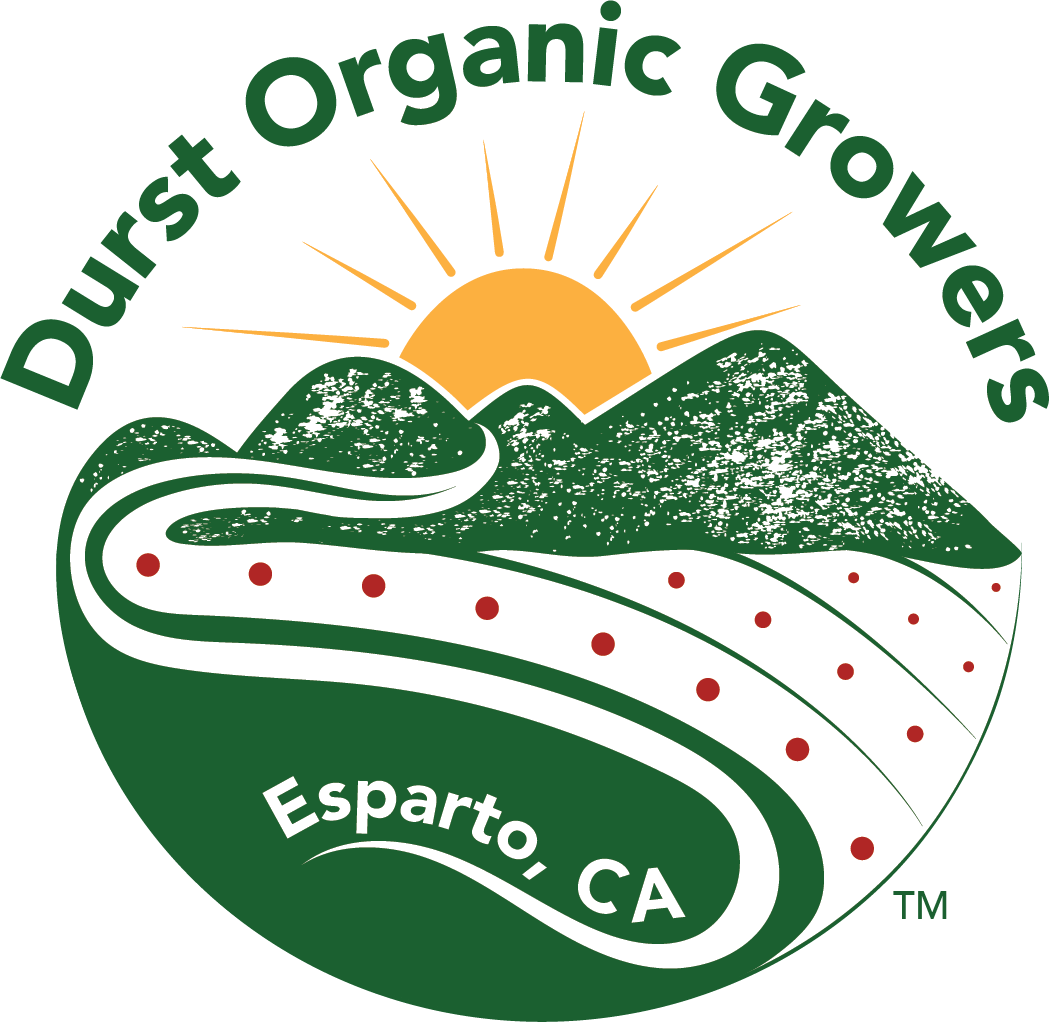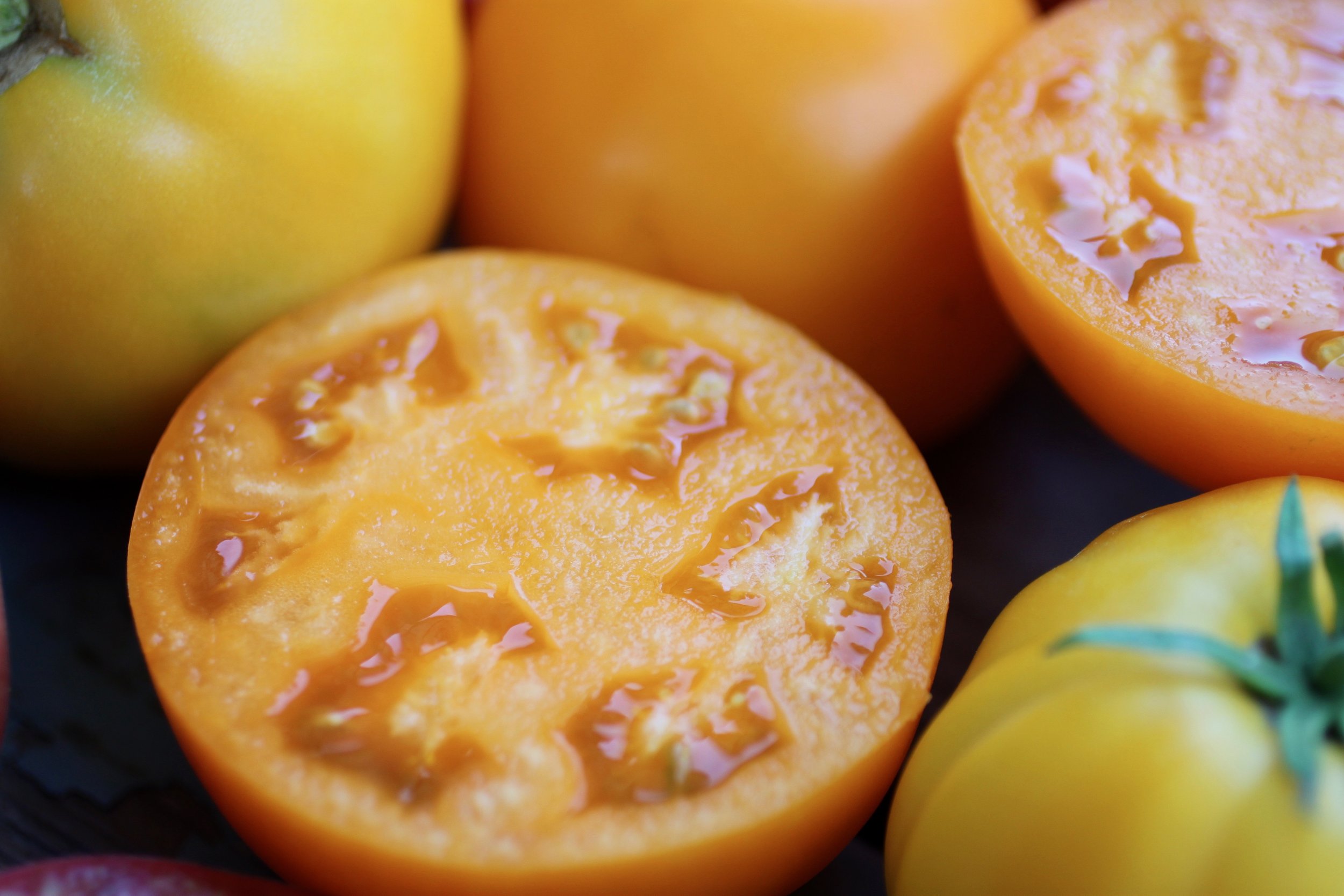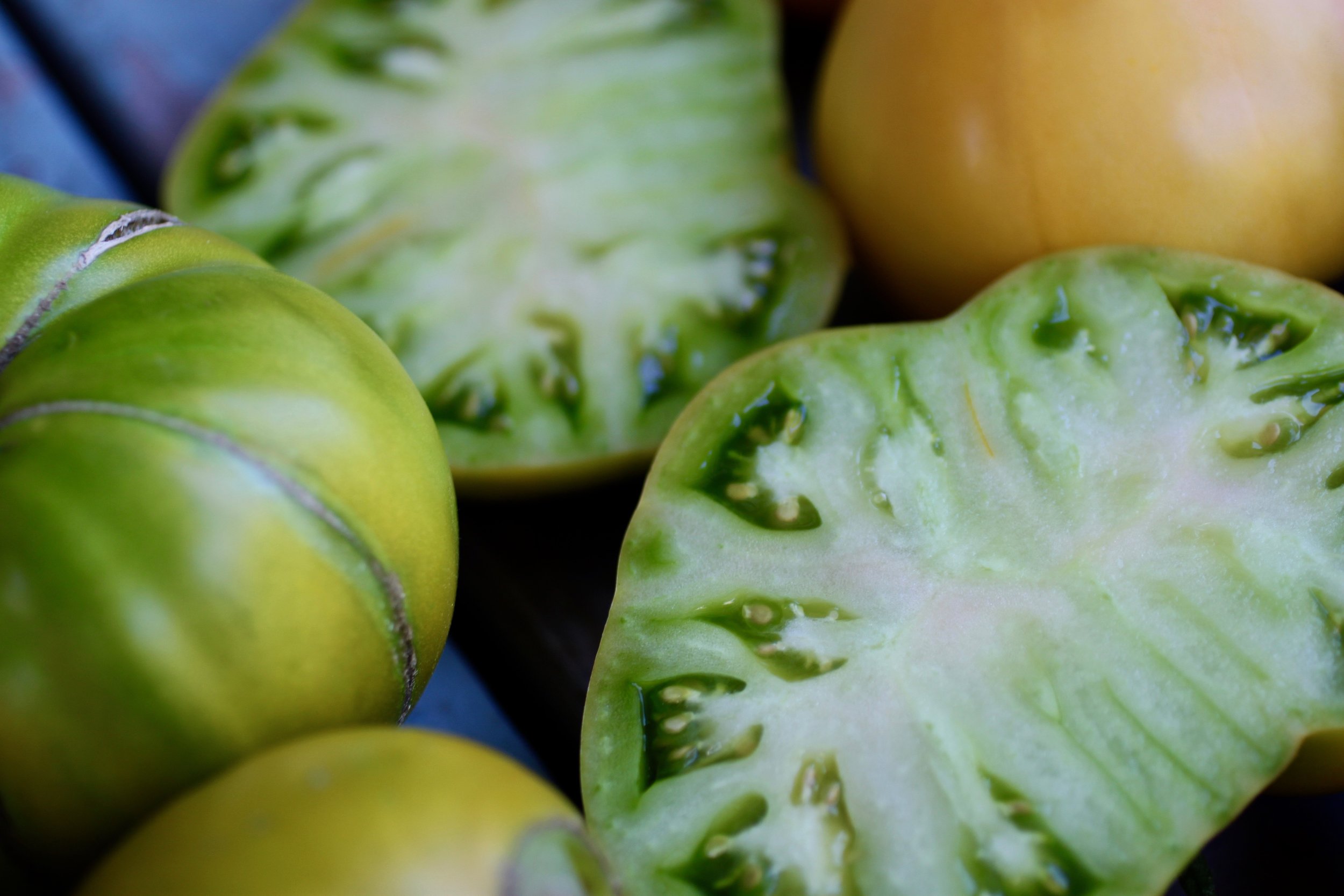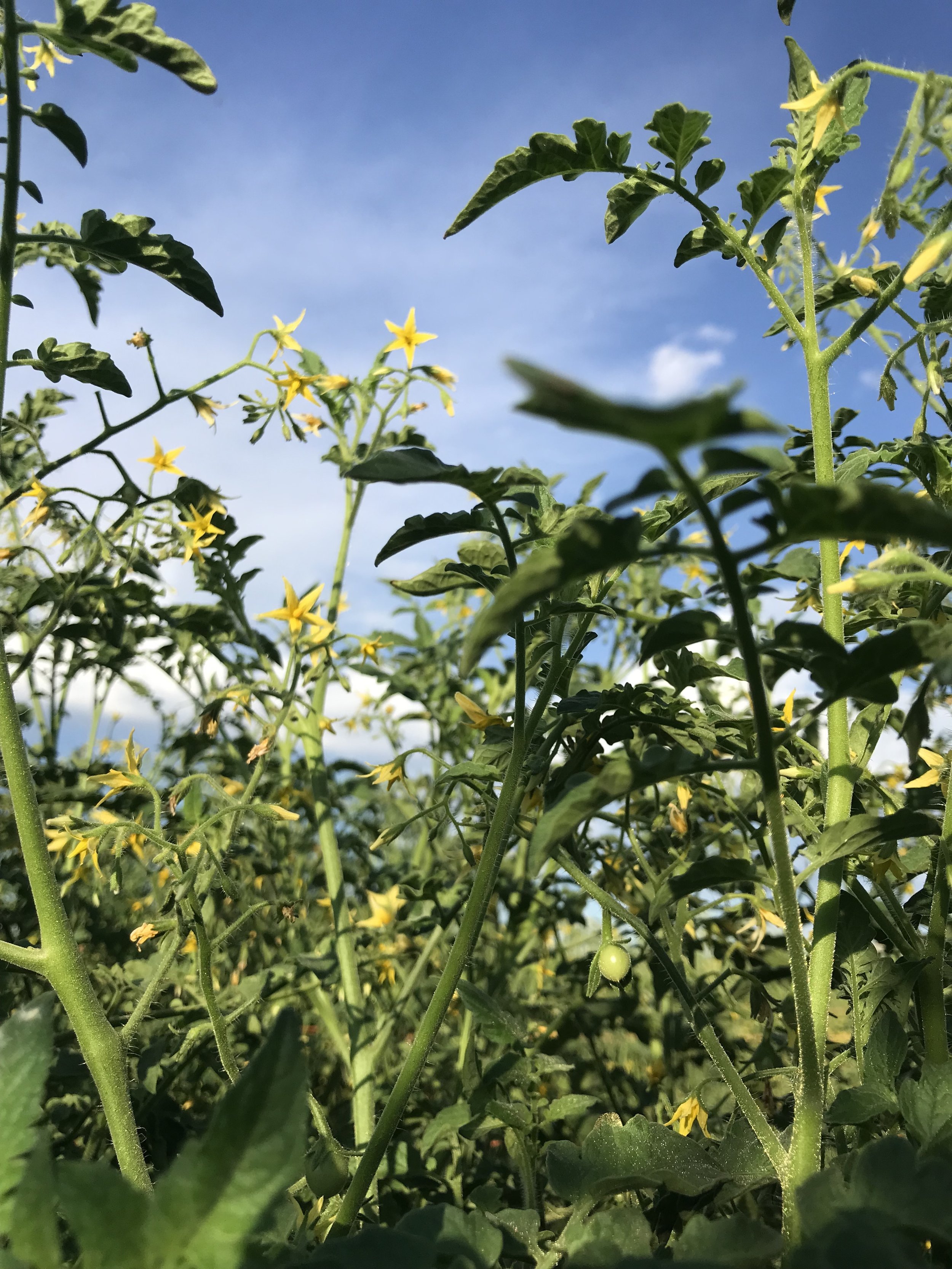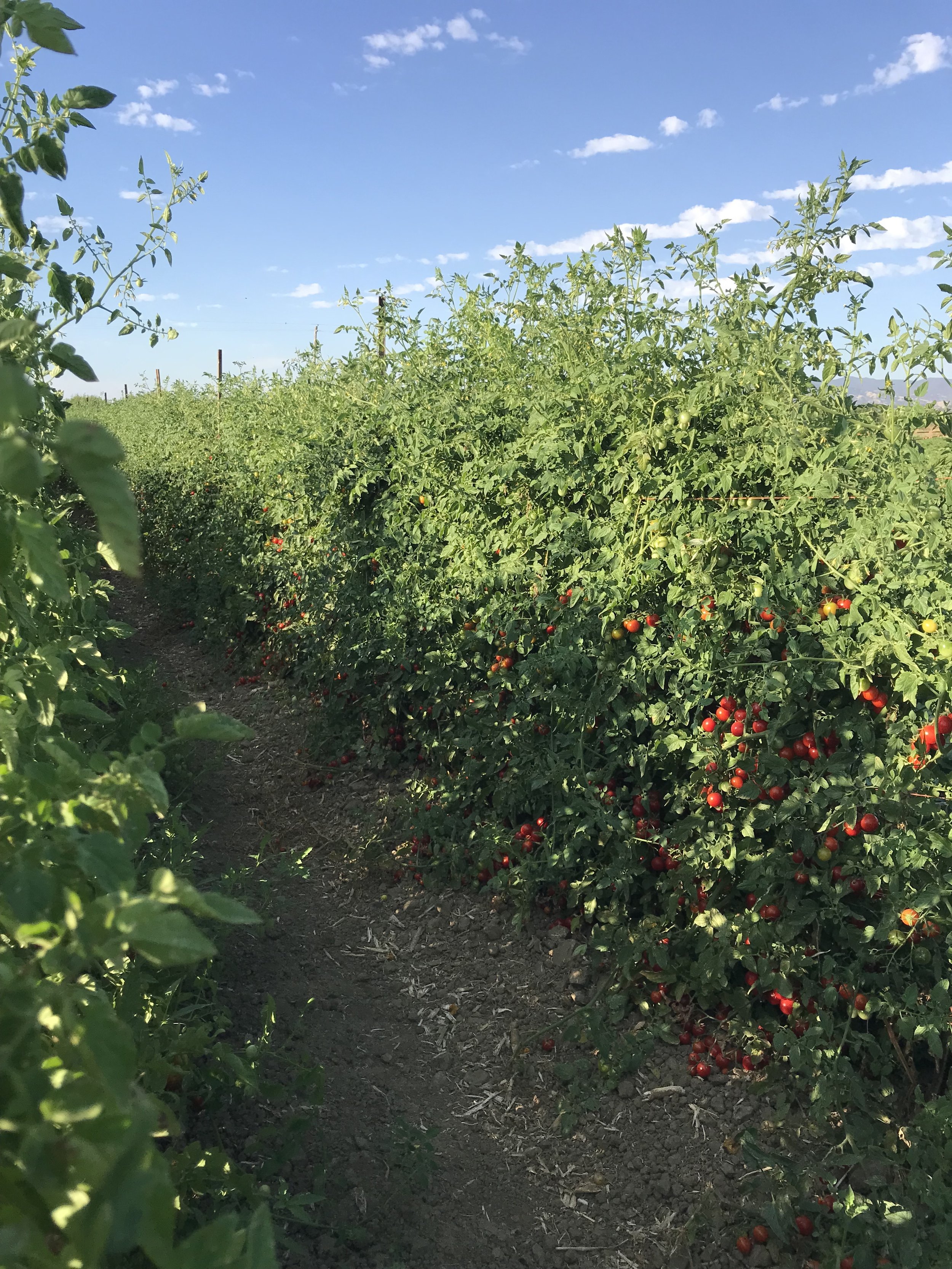Hungry Hollow Happenings: August 2023
This newsletter was sent out in August, 2023. If you’d like to subscribe to get future letters sent to your inbox, click here: subscribe!
A lot has happened since our last newsletter. Most notably, we finished our summer planting and began (an ongoing) harvest!
Right now, we’re harvesting the type of fruits we dream about in winter. Bright red watermelon so crisp, sweet, and juicy it “pops” when you cut into it; juice dripping down your hand as you enjoy a slice. The sweetest fresh corn and refreshingly delicate cucumbers. A medley of melons – true summer flavors. And, perhaps, the biggest treat: soil-grown, vine-ripened, peak-summer tomatoes.
Purple, red, orange, yellow, green; small, big, huge; round, oblong, funky shapes – they’re all good, especially right now. The tomatoes we’re harvesting right now are the tomatoes that remind us why we grow tomatoes, and keep us dreaming about them long after they’re gone.
It is a disservice to The Tomato that we have turned “fresh” tomatoes into somewhat of a “staple” item. I say, “staple” in that they’re available year-round; and in response so, too, is seemingly everyone’s appetite for them. This ability to source “fresh” tomatoes at the grocery store, no matter the season, has made many lose an appreciation for a truly vine-ripened, in-season, and beautifully complex tomato. Sure, you can grow a tomato in a greenhouse during winter (or import them from other countries), but it will never have the same flavor and specialness that only a tomato grown in the soil and ripened under the warm rays of the summer sun can provide.
So, please, eat them up! Indulge! Have some tomato in all your summer meals. Maybe even try drying cherry tomatoes this year to extend their splendor. They’ll be gone before we know it.
The extra wait-time on this year’s tomatoes was well worth it. For the most part, we have an exceptionally beautiful and bountiful crop. It has us all in awe as we admire the bright green, vigorous, plants with abundant blossoms and gorgeous fruits.
This spectacle of beauty is a contrast to the last few years, in which we saw a (not) good amount of disease pressure cropping up in our tomatoes. This could be due to a number of factors. Some of which — like the extreme drought years vs. increased rainfall this year; changing conditions of fields surrounding our farm; weather, etc. — are beyond our scope. Some — like crop rotation length, field practices, variety selection, pest management, and inputs – we have to carefully evaluate and consider regularly.
To do that, we seek out new information (often with help from our local farm extension program) and always remain open to trying new things. One new thing we tried this year is inoculating our tomato transplants with trichoderma – a beneficial fungi that colonizes on plant roots. Once established, the trichoderma colony can attack, colonize, parasitize, and gain nutrients from other (possibly undesirable) fungi. Colonizing on the plant roots may sound like a bad thing, but it’s beneficial to the plant. Because trichoderma survive off of and thrive when there is an abundance of healthy roots, they have evolved ways to enhance robust plant and root growth. One strain has even been shown to increase the numbers of deep roots an inoculated plant will develop, which can enable the plant to become more tolerant of drought conditions by accessing deeper water reserves. Studies have also shown that plants inoculated with trichoderma can also be more productive using less fertilizer inputs (making more out of less? Music to our ears!). But what interested us most about the use of trichoderma is it’s ability to control pathogens – some strains even push plants to activate their existing natural defense mechanisms making them much more resilient to disease pressure.
Another new tool we added this year is the use of vermi-extract, which is similar to compost tea. It is a liquid extraction from vermicompost (earthworm castings) that contains nutrients and beneficial microbes (it’s alive!), both of which can increase plants’ resiliency and vigor while contributing to overall soil health. We added it into our “drench water” during transplanting, and periodically add it to our buried drip irrigation to give plants a boost during the growing season (drench water is the water we use to“drench” the plants as we plant them. It is delivered to the plants from a tank on the transplanting tractor through a hose emitting the water right into the root zone as the plants go into the ground).
We don’t have any formal way to measure the success or direct benefits of these new microbial materials on our farm, but based off what we’re seeing they seem to be living up to expectations! We’re seeing much less disease pressure than in previous years, and most of the plants appear to be in very good health. Additionally, the tomato plants are loaded with an abundance of good quality fruit.
This year we have expanded our tomato offerings to include Romas, San Marzanos, and Heirlooms (once again!). We took a brief hiatus from growing Heirlooms to reevaluate the practice and buyer demands – you can read more on that in this post from 2018 in which Jim explains why we weren’t growing heirlooms – but we’re back at it this year, and they’re looking (and tasting) quite good. They need nothing more than a little olive oil and flaky salt to become a perfect summer meal all on their own.
For some slightly more involved summer meal ideas, check out the recipes below. Until next time, happy tomato eating!
Pasta with Fresh & Roasted Tomatoes
When the tomatoes are so nice, we use them twice! This pasta incorporates roasted cherry tomatoes for the sauce, and fresh tomatoes tossed with basil and olive oil round it out! It’s a summer dish worth repeating.
Agua Fresca de Sandía
It doesn’t get more “summer” than this juice.
Broiled Corn & Cherry Tomato Salad
This summer salad makes a great side for grilled meats and a perfect potluck addition.
